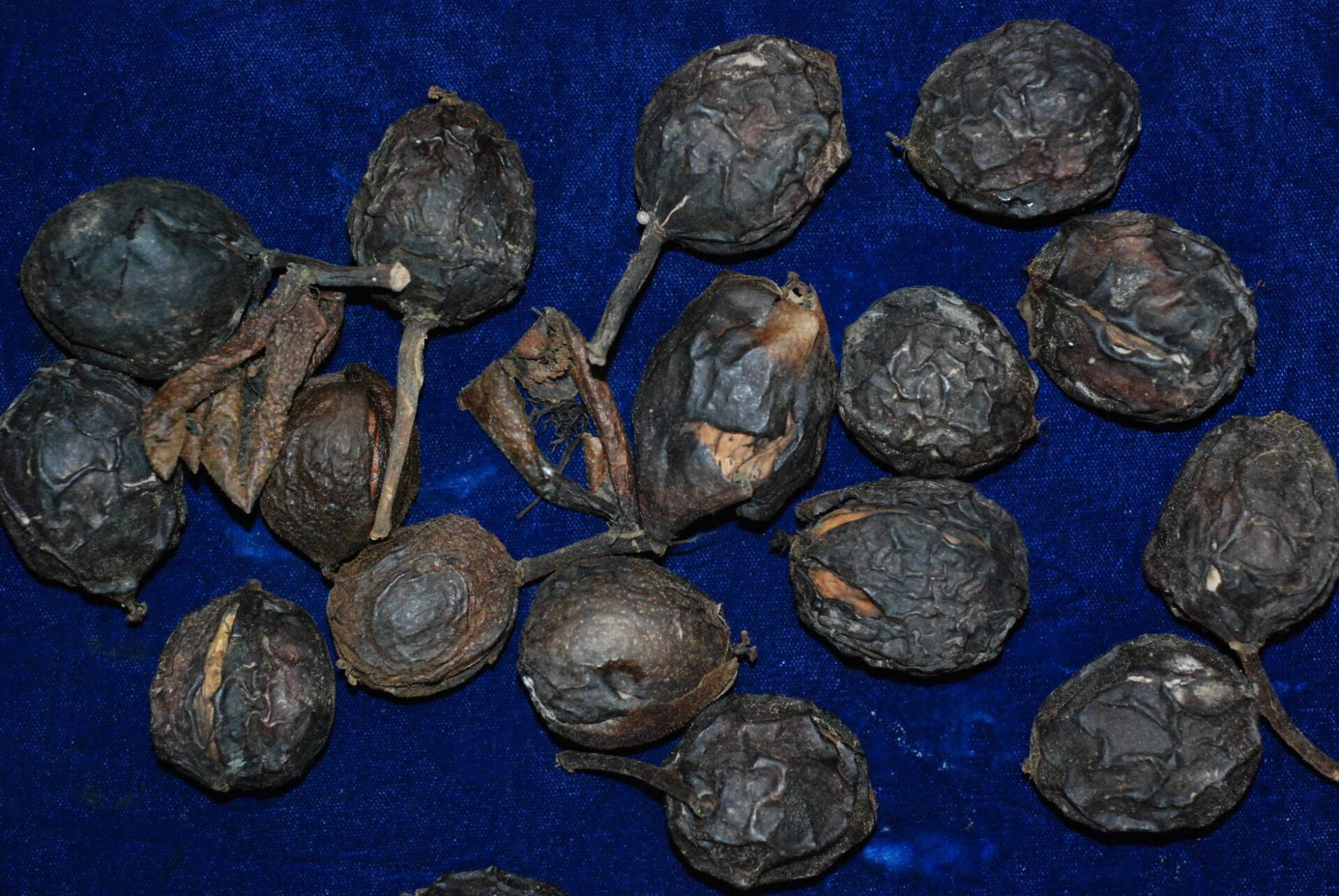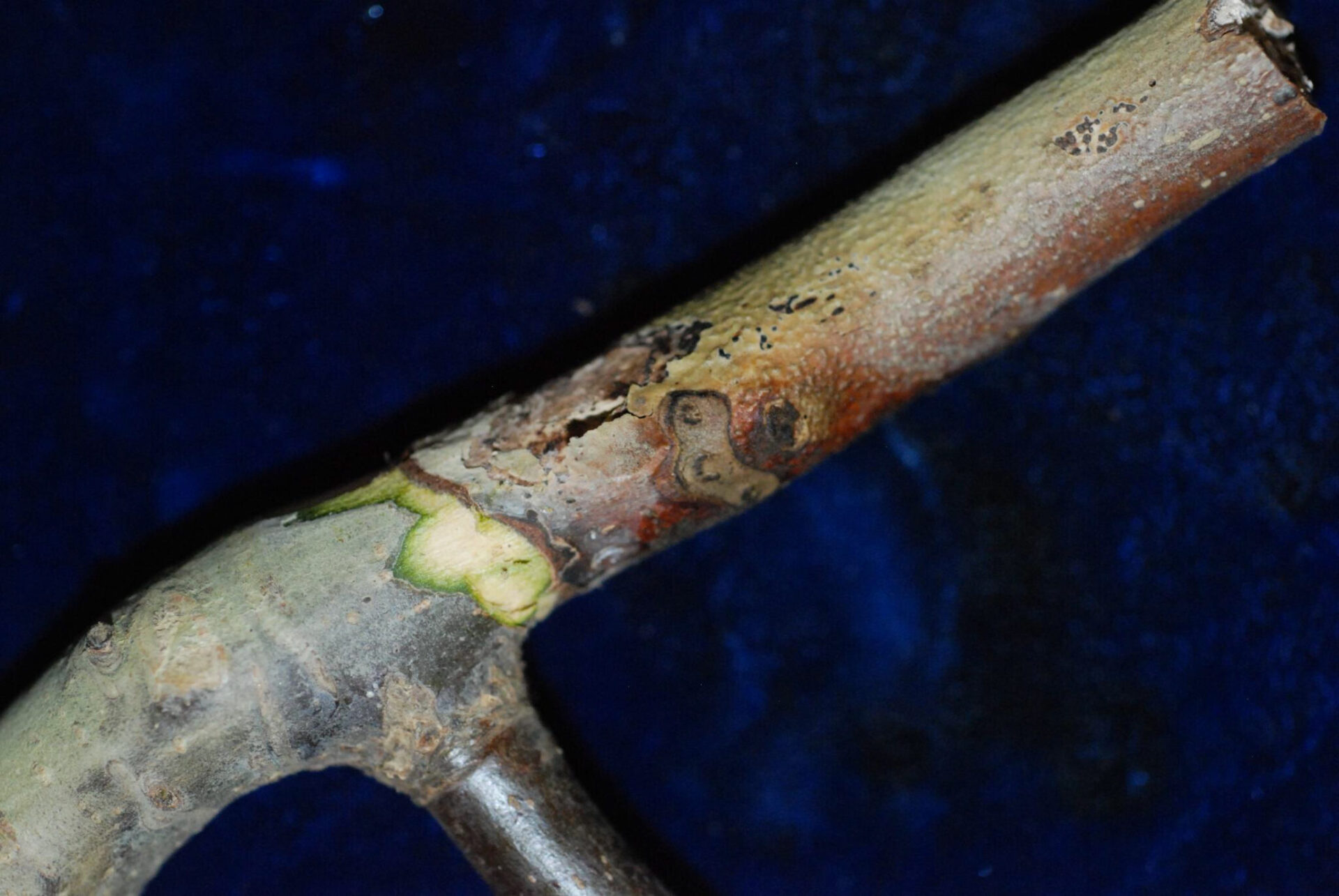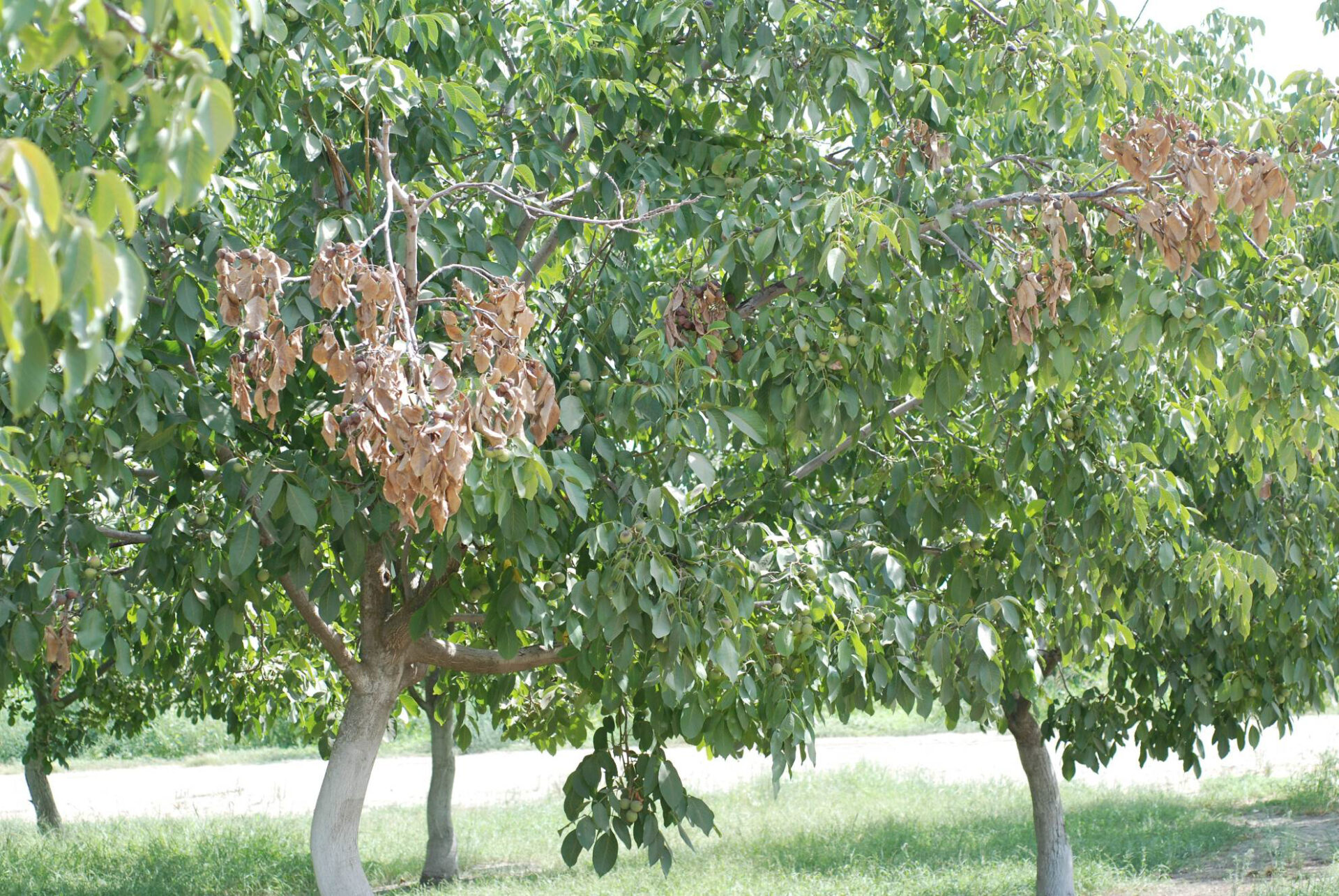With the price of walnuts in the doldrums, growers may be tempted to forego in-season pruning and fungicide sprays to control Botryosphaeria canker and blight to save on input costs.
Josh Cartwright, a PCA with Bear River Supply Inc. in Rio Oso, faced just those challenges among some of his clients the past season. In fact, some didn’t even believe Bot was an issue.
“It’s hard to convince some growers of this. You have to take them out and show them to get them to see it for themselves,” Cartwright said.
But he and others familiar with the fungal disease said now may not be the time for growers to scrimp on control as it could come back to haunt them with potentially reduced yields and limb dieback.
Instead, they recommend taking an integrated approach that includes scouting for disease signs, strategic pruning of dead branches during the season, reducing sprinkler wetting of leaves, minimizing physical tree damage and timely fungicide sprays when needed.
The Pathogens’ Origins
Botryosphaeria panicle and shoot blight was first discovered in California pistachios in Butte County in 1984. Since then, the fungal disease has spread throughout the state and has moved into walnuts and almonds, although diseases caused by Botryosphaeriaceae were described in both walnuts and almonds much earlier than in pistachios.
Themis Michailides, a UC Davis professor of Plant Pathology based at the Kearney Agricultural Center near Parlier, has spent much of his career studying the plant pathogens responsible for the disease. During research funded by the Walnut Board from 2014 to 2017, he found 10 fungal pathogens from the family of Botryosphaeriaceae and two Phomopsis species were responsible for dieback in walnuts. The actual complex varies among regions of the state.
In Stanislaus County, for example, three species of Botryosphaeria and two of Phomopsis have been identified infecting walnuts, whereas in Tulare County, only three Bot species have been found. And not a single species has been found to infect walnuts throughout the entire state, according to Michailides’ research.
The infection path also differs among species. All 10 Botryosphaeria and at least two Phomopsis species can infect the fruit, in this case, the walnut. But only six Bot species can directly infect spurs and shoots.
Once the pathogen has established and decayed the fruit, however, all of the pathogens can move from the nut to infect spurs and shoots.
Michailides’ research also found that not all of 10 Botryosphaeria and two Phomopsis species that infect walnuts will infect almonds and pistachios and vice versa.
Complicating control is the complex of Bot organisms that infects walnuts that has also been found to infect more than 35 other tree hosts in 18 different plant families in the state.

Know the Risk in Advance
The best scenario is if growers know the risk of Botryosphaeria/Phomopsis developing during the upcoming season, Michailides said. Then, they can plan accordingly.
“The best thing for the grower is to know if they have disease from historical data in their field,” he said. “And this will be an old orchard that the grower sees a lot of dead branches and spurs and a high amount of dead parts of the canopy. I would suspect they have Bot/Phomopsis because those are the diseases that cause those symptoms.”
During the dormant period, growers and PCAs also can randomly pull about 30 shoots to send to a laboratory, which will assay the buds using the BUDMON technique for the presence of the fungal pathogens. The highly sensitive diagnostic tests give an indication about how much Botryosphaeria/Phomopsis is present and can even detect the pathogens when no visual symptoms are present.
Even without the BUDMON test, Michailides said experienced PCAs are able to see pycnidia, fruiting bodies that produce and release spores, in dead spurs to determine percent infection and evaluate the disease risk.
A low infection rate is when 1% to 20% of a random dead spur/shoots sample of 50 dead spurs has Botryosphaeria/Phomopsis pycnidia. A moderate infection is when 20% to 50% of the random samples have pycnidia. An infection level above 50% is considered severe.
Path to Infection
Bot potentially reduces yields by killing small fruiting wood and larger branches and directly infecting nuts. Not only can this potentially affect this year’s crop, it also can affect future crops by killing buds and fruiting wood. How much of a yield loss growers will suffer is hard to quantify in field trials because of variability among individual trees, Michailides said.
But he has had growers tell him they saw yields of Bot-infected orchards return to normal when they adopted an IPM program that included pruning dead branches and a timely fungicide regime.
The Botryosphaeria/Phomopsis complex causes six symptoms: cankers and blighted branches, Botryosphaeria shoot and fruit blight, walnut blight and Botryosphaeria, cankers in spurs, cankers associated with pruning wounds and branch dieback.
Two types of spores may be found in an orchard. The more common pycnidiospores can be spread by blowing rain or splashing water, such as from sprinklers. Ascospores can be spread by the wind. Both need conducive conditions of at least 0.25 inches of rain or irrigation water and temperatures above 50 degrees F to trigger infection. Redirecting sprinklers so they don’t wet plants helps reduce disease transmission.
Walnut orchards along the Sacramento River also are at higher risk because of increased humidity and September fog, Michailides said.
Wounds, injury or damage from any number of causes, including mechanical damage, pruning, sunburn, frost, hail, leaf scars, bud scars, blighted fruit, woodpeckers and walnut scale feeding, provide entryways for the fungal pathogens.
In fact, studies by Michailides and his group found walnut trees with scale infestations were 60% to 70% more prone to Bot infections than orchards without scale issues. Green fruit typically is infected early in the season, but the brown to blackened dead tissue may not be visible until late summer or early fall. This is known as latent infection.
As the decay develops in one fruit, it may expand to nearby fruit, eventually invading the fruit stem and then the spur and killing it along with next year’s buds.
Left uncontrolled, dead spurs and shoots covered with pycnidia will accumulate in the tree. With more dead tissue comes more buildup of spore inoculum in the tree canopies. It also serves as a disease reservoir.
As part of an IPM program, prune dead branches during the season, which can reduce Bot cankers by as much as 50%, based on research with pistachio led by Michailides. If infection rates are low to moderate, remove the prunings from the orchard and either burn or compost them. If infection rates are high, chip or shred the prunings and leave them in the orchard to decompose because inoculum has already reached saturation levels and additional spores from the prunings will not increase the infection risks.

Protect Susceptible Tissue
Because infection occurs early in the season, protecting susceptible tissue in the spring and early summer with fungicides works well in managing Bot. Several fungicides are labeled for Botryosphaeria and Phomopsis.
Growers who have orchards with no Bot, based on winter surveys, may be able to forgo a fungicide spray. If infection levels are low, Michailides recommends a single fungicide spray made the second half of June or the first half of July. For moderate infections, a second spray about a month later in late July or early August should be added.
For severely infected orchards, a three- or even four-spray program may be warranted, with applications made in mid-May, mid-June and mid-July. A fourth may be added in mid-April.
Based on UC research, Cartwright frequently recommends two applications of a phosphate fungicide, one in the fall after harvest when leaves are still green and able to take it up, and another in the spring as soon as the trees have leafed out. Because the product is economical, Cartwright said growers may be more receptive to using it. Then, he will follow those up with an early summer application of triazole or another fungicide registered for walnut diseases.
Although the Botryosphaeria and Phomopsis organisms have not developed resistance to registered fungicides, Michailides said rotating modes of action is still wise since the pathogens causing walnut mold, which also may be found in orchards, could develop resistance if routinely exposed to the same chemistries.
Time Pruning Carefully
Research also found that pruning trees in the cooler fall, such as in October or November, yielded lower infections than pruning in February or early March when temperatures are warmer. Even under cool conditions, pruning wounds may remain susceptible to infection for up to four months.
Additionally, pruning 1- to 2-year-old wood produced fewer infections than pruning 3- to 4-year-old wood. That may be because older wood has a pithy center that absorbs and holds moisture longer, making it more susceptible to Botryosphaeria. The pathogen also grows through pith faster than it does woody tissue.

















